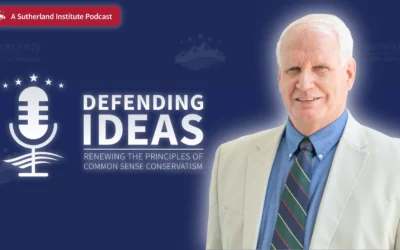
Written by William C. Duncan
April 24, 2024
Originally published in Deseret News.
Just short of two years after retiring from the U.S. Supreme Court, former Justice Stephen Breyer is advancing a critique of the court that belies its true purpose.
Breyer has published a new book, “Reading the Constitution: Why I Chose Pragmatism, Not Textualism.” (The somewhat arch italics are in the original.) As the none-too-subtle subtitle suggests, the book is intended as a criticism of the majority of current justices for their approach to interpreting the U.S. Constitution, which is at odds with Breyer’s “pragmatic” approach.
In a Politico interview, Breyer criticizes textualism, which he describes as “a kind of literalism” in which the judge is guided by the text of the Constitution or statute rather than “speculation about the drafters’ extra-textually derived purposes, the desirability of the fair readings, the anticipated consequences. In other words, don’t look at consequences. Don’t look at purposes. Look at text.”
In contrast, Breyer would propose that the words are only a starting point: “Why did someone write those words? What was the purpose? What are the consequences [of a proposed interpretation]? Will they further that purpose? And [are the values] consistent with the values that are written — democracy, human rights – into our own [C]onstitution?”
The soundbite that has emerged from the interview is that if Supreme Court justices try to interpret the Constitution consistent with its original public meaning, “we will have a Constitution that no one wants.”
It is hard to know precisely what this means, but given the examples Breyer uses in the interview, it presumably means that majorities of Americans will disagree with the implications of specific decisions on issues like abortion and gun control.
To avoid this perceived problem, justices could be more “pragmatic.” They need not worry about what the Constitution says or was understood at the time of ratification to mean. Instead, judges should look at the intent of provisions, the outcomes a certain interpretation will yield, and the “values” that can be advanced by different interpretations.
All of which means the justices will be making it up as they go, as constitutional scholar Michael Stokes Paulsen has observed.
The fundamental problem with this approach is that a written Constitution is entirely superfluous if the document is simply meant to give the people what they want. Why go to the trouble of enumerating the structure of government, assigning responsibilities, imposing limitations, specifying rights, if the Constitution were intended to change with public opinion — discerned, of course, by Supreme Court justices?
Worries that the Constitution will not be “relevant” if the Supreme Court cannot read into it vague values and preferred results are based on a false dichotomy. The choice is not between being shackled to the social attitudes and technology of the 18th century or being freed by judicial creativity.
The Framers ensured that the vast majority of subjects would be decided by representative officials, with only some very important exceptions like those constraints on government power in the Bill of Rights. More basically, the Framers created, in Article 5, a system for changing even the constitutional text through amendments.
In doing so, they reiterated the primacy of the document and thus provided something that pragmatism cannot ensure — a Constitution that people can rely on. A pragmatic justice is left to his or her own preferences and outlook or, at best, sense of current majority opinion. This approach yields a malleable document to be used or ignored as it suits the values of appointed judges. What if they get it wrong? What if the consequences they seek to impose in their opinions turn out to be ruinous to national stability or to individual freedom?
It is true that trying to remain true to the document’s meaning can be a constraint on the imposition of fleeting popular preferences, but that is the point. In nonessentials, the constitutional structure facilitates majority preferences. When fundamental rights or a need for deliberation is involved, it can thwart those preferences (absent a new amendment), but we have always understood those protections to be the genius of the constitutional system.
Thus, the choice is really between getting the Constitution that some results-oriented justices believe the majority wants, or a Constitution that can be relied on, a Constitution we can trust. That should be an easy choice.
More Insights
Read More
Protecting property rights against government overreach
While governments can continue to regulate land use, these regulations and fees must be justified by a government interest and proportional to the effect of the development’s impact on that interest.
Do we need to care about the Utah State Board of Education?
For any Utah voters who also feel like K-12 public education is headed in the wrong direction, learning about the candidates running for a seat on the Utah State Board of Education (USBE) is a wise choice this election season.
Defending education choice the right way
Education choice has exploded in popularity across the nation in recent years. So why does it remain a contentious point of debate in some parts of the country?


